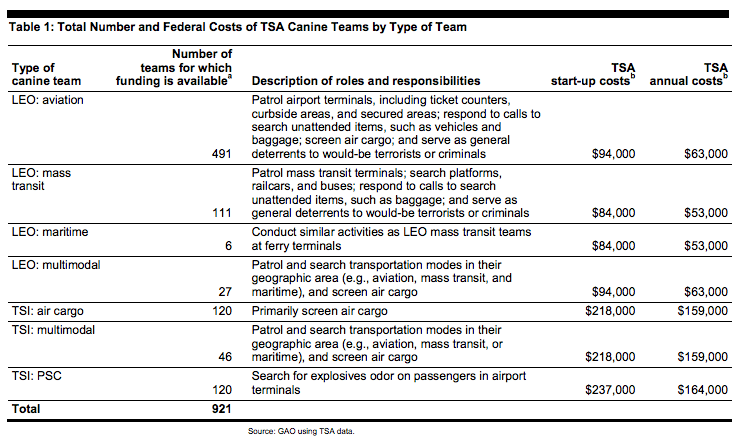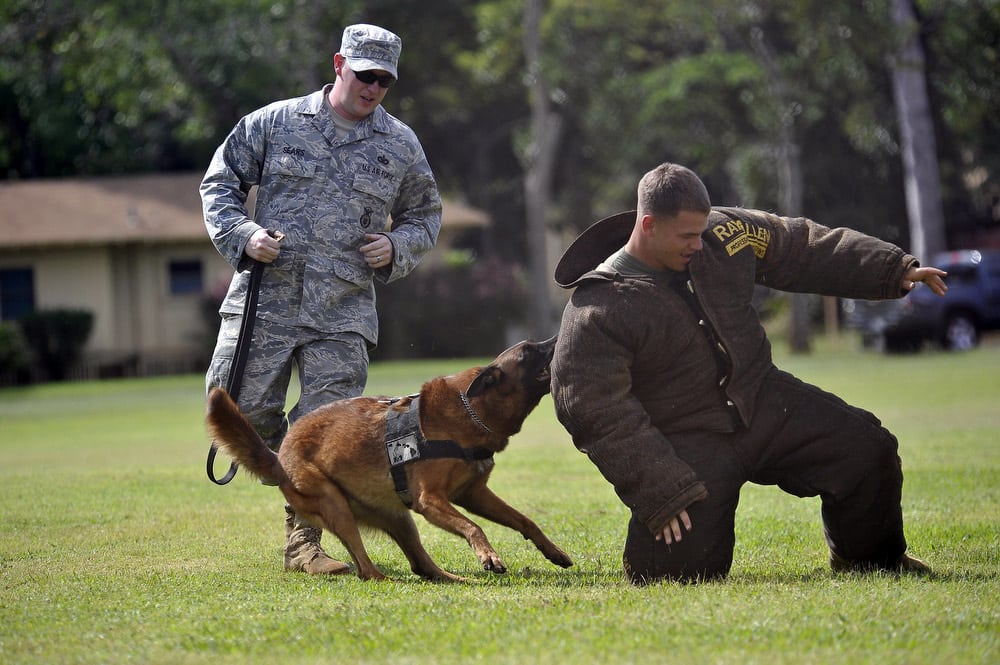Skift Take
The inefficiencies of the TSA have passed the human stage, and are now being passing on to other living beings.
If only the sum total of all the inefficiencies of TSA and the hatred directed at it could be bottled up and channelized somehow into pure energy, we may never have an energy crisis in America again. Now the TSA’s expensive new program to use bomb sniffing dogs — called National Canine Program (NCP) for security — is under scrutiny, and according to a new scathing report by federal auditors Government Accountability Office, the program is useless, expensive and failing on all fronts.
GAO followed these dogs, the handlers and the program for a year, and even did a video sting (two videos embedded below) before coming up with these two main conclusions:
- GAO analysis show some canine teams were repeatedly not in compliance with TSA’s monthly training requirement (four hours of training every four weeks) which ensures canine teams remain proficient in explosives detection.
- GAO analysis of TSA’s cargo-screening data showed that canine teams deployed to higher-risk airport locations are not being used for passenger screening as intended, but for other purposes, such as screening air cargo or training.
- Canine teams have not been deployed to the highest-risk airport terminals and concourses based on TSA’s high-risk list, for various reasons. Among them, concerns from an airport law enforcement association about TSA’s decision to deploy these teams with multiple civilian handlers that may not be able to handle a suicide bombing attempt requiring an immediate law enforcement
response.
Besides these big operational mess-ups, the costs of managing these sub-standard programs is astronomical, and all funded by taxpayers:
- From 2010 to 2012, TSA funding for these canine teams increased from about $52 million to $101 million. During this time, TSA requested and was provided funding to increase the stipend it provides to law enforcement agencies for participating in NCP.
- For 2013, TSA is requesting about $96 million for its canine program, which is about $5 million less than 2012. TSA plans to continue to fund 921 canine teams, and cited savings on supplies, and efficiencies in operations, among others, as reasons for the reduced funding request.
Per dog costs are also very high for something’s that not even working well, as the chart below breaks down: 
Two videos showing GAO’s hidden camera investigation and how these teams missed decoys:
TSA’s response to the report, via GSNnews: Beyond its ongoing testing and evaluation, it will update its website that monitors the program in March to better track the passenger screening by dogs in the same way it does for cargo…TSA continues to evaluate and modify its risk-based deployment methodology as needed and that it will deploy future teams to highest-priority airports based on both operational and risk-based analysis.
The full GAO report, embedded below:
The Daily Newsletter
Our daily coverage of the global travel industry. Written by editors and analysts from across Skift’s brands.
Have a confidential tip for Skift? Get in touch
Photo credit: Joint canine training of TSA and Hawaii Police Department, in Nov 2010. http://www.flickr.com/photos/usairforce/5229460052/ / US Air Force - Flickr.com
